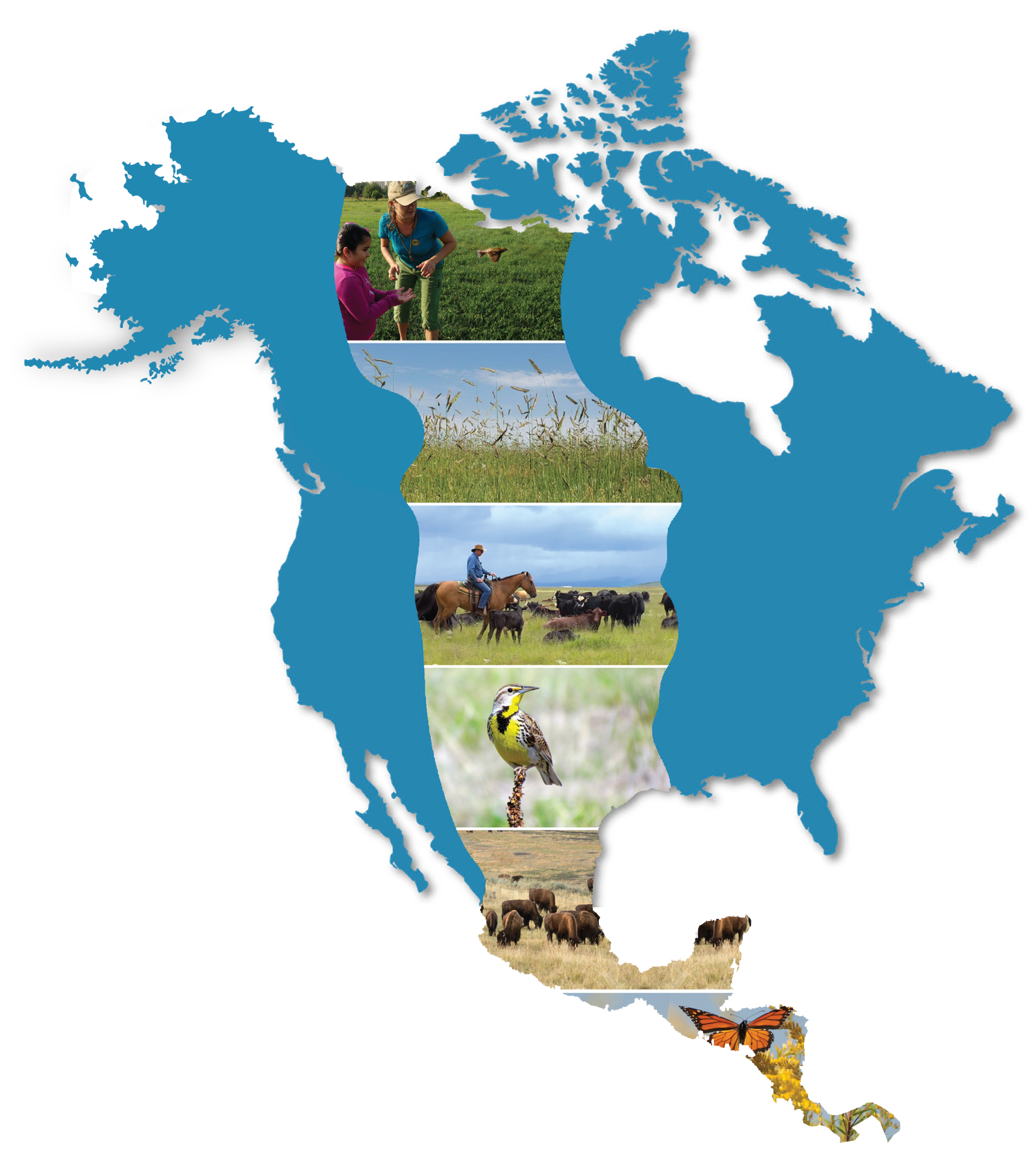Continent-Scale Landscape Conservation Design for Temperate Grasslands of the Great Plains and Chihuahuan Desert
Nature Serve, Patrick J. Comer
The North American Intergovernmental Committee on Cooperation for Wilderness and Protected Areas Conservation (NAWPA) held discussions from 2015-2017 to analyze the state of North American grasslands and their future resiliency. In support of these conversations, the Western office of NatureServe located in Colorado, published a conservation plan with NAWPA and alongside other conservation groups such as the Nature Conservancy of Canada, the Texas Parks and Wildlife Department, the USGS Gap Analysis program, and others.
NatureServe originally emerged out of the Nature Conservancy as the Natural Heritage Network, now operating out of all 50 states. The organization states that its work primarily falls under four objectives: documenting the conservation status and location of species and ecosystems, producing analyses to guide conservation planning, developing software tools to guide conservation planning, and managing natural heritage programs and conservation data centers.
The document identifies vulnerable species and potential conservation areas across 12 identified major grassland ecosystem types, all located in the Great Plains and the Chihuahuan Desert. Research of these areas found that there are 174 species considered some form of vulnerable or imperiled, yet only 103 of the species are protected under legislation in at least one country.
Corresponding author of NatureServe’s Conservation Design, Patrick J. Comer works as the nonprofit’s Chief Terrestrial Ecologist and thus played a critical role in the development of the Design.
